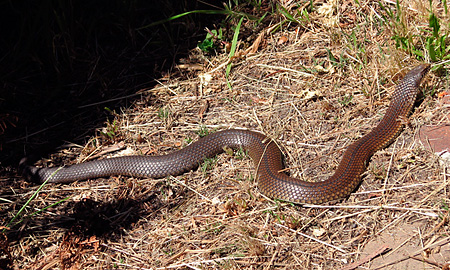Introduction
When it comes to poisonous serpents, Australia is home to several of the most fascinating and hazardous species in the world. Amongst these, the Tiger Snake attracts attention not just for its powerful venom however likewise for its interesting actions. Understanding the habits of poisonous snakes like the Tiger Serpent is vital for both wildlife fanatics and those residing in locations where these snakes exist. This post looks into various elements of Tiger Serpent actions, habitat, recognition, precaution, and first aid techniques in situation of a snake bite.
Understanding the Actions of Venomous Snakes Like the Tiger Snake
The Tiger Snake, clinically called Notechis scutatus, is well-known for its aggressive nature when endangered. These serpents exhibit a range of behaviors that can be quite various from their non-venomous equivalents.
Characteristics of Tiger Snakes
The Tiger Serpent is quickly identifiable as a result of its distinct bands or stripes that appear like a tiger's markings. They can differ in color from yellowish-brown to dark olive or black. This coloration offers not just as camouflage however also as a warning signal to possible predators.
Adaptability to Environment
One exceptional facet of their behavior is their versatility to various settings. Found mostly in coastal areas, marshes, and wetlands throughout Australia and Tasmania, they can thrive in varied habitats including city locations.
Hunting Techniques
Tiger Serpents are ambush killers mainly feeding upon fish, frogs, and tiny mammals. They have eager sight and an acute feeling of scent which helps them in situating prey effectively.
Venom Composition
Their venom contains neurotoxins that affect the nerve system, resulting in paralysis or death in smaller sized animals. For people, immediate clinical interest is vital after a tiger serpent bite as a result of its possibly deadly effects.
Natural Habitat of Tiger Snakes
Preferred Locations
Understanding where these snakes live clarify their behavioral patterns. The tiger snake habitat consists of:
- Coastal regions Swamps Grasslands Urban locations with bountiful water sources
Seasonal Movements
During warmer months, Tiger Snakes are extra active as they indulge in sunlight or search for food. On the other hand, cooler months see them pulling back into hibernation sites.
Are Tiger Snakes Venomous?
Yes! The question "are tiger snakes poisonous?" usually develops among those unfamiliar with this species. Their poison is taken into consideration one of the most dangerous amongst all serpent varieties worldwide.

Symptoms of a Tiger Serpent Bite
If bitten by a tiger snake, signs and symptoms might consist of:
- Localized pain Swelling at the bite site Nausea and vomiting Sweating and confusion
Immediate Snake awareness Australia clinical aid is critical as untreated attacks can cause severe health complications or even death.
First Help for Serpent Bites: Quick Response Guide
Knowing exactly how to carry out emergency treatment for a snake bite might conserve someone's life. Below's what you ought to do:
Step 1: Stay Calm
Keeping tranquility aids slow down heart price which decreases poison spread.
Step 2: Debilitate the Influenced Area
Keep the impacted arm or leg still and listed below heart level if possible.
Step 3: Call Emergency Situation Services
Always look for expert medical aid right away after a serpent bite.

First Help for Snake Bite Package Essentials
A fully equipped snake bite emergency treatment kit should include:
- A compression bandage Antiseptic wipes A set of scissors An ice bag
Safety Preventative measures: Stopping Snake Bites in Australia
Awareness Programs
Educating areas concerning local snake varieties and their habits can significantly minimize encounters causing bites.
Avoiding Dangerous Areas
Staying far from long grass throughout warmer months decreases contact with serpents that might be relaxing or hunting.
Common Misunderstandings Regarding Tiger Snakes
Many individuals believe mistaken beliefs about the actions of tiger serpents cause unnecessary anxiety. Below are some explanations:
Myth 1: All Tigers Are Aggressive
Not all tiger snakes will certainly show hostility if left undisturbed; several favor fleeing as opposed to confrontation.
Myth 2: They Chase Humans
Tiger serpents do not proactively chase human beings; they may strike when they really feel threatened but will Allergic Reactions normally retreat if offered space.
Conservation Initiatives Associated with Venomous Snakes
Conservation efforts focus on educating neighborhoods concerning protecting neighborhood wildlife while decreasing human-snake interactions.
Importance of Ecosystems
Understanding that venomous snakes play an important role in maintaining eco-friendly equilibrium helps foster gratitude as opposed to worry towards them.
FAQs Regarding Tiger Snakes
What ought to I do if I experience a tiger snake?- Maintain distance and gradually retreat without abrupt movements.
- While bites aren't very typical due to recognition initiatives, they still occur yearly within Australia.
- Baby tiger serpents can supply complete doses of venom in spite of being smaller; hence care is encouraged around them.
- They mostly eat frogs, fish, little creatures like rodents, and other reptiles.
- It's prohibited in most jurisdictions without proper licensing because of safety and security worries concerning their venom.
- Wear durable boots and stay on marked routes; appearance prior to placing hands or feet into hidden areas like rocks or logs.
Conclusion
Understanding the habits of poisonous snakes like the Tiger Serpent not just boosts our expertise but additionally advertises safety understanding What to do if bitten by a snake amongst those living near their environments. From acknowledging their characteristics, understanding first aid protocols adhering to a bite, via engaging conservation efforts-- every facet plays an essential role in promoting conjunction with these fascinating reptiles while respecting their location within our ecosystem.

As we strengthen our understanding through education and experience, we contribute positively towards making sure both human safety and security and wildlife preservation-- benefitting all events involved!